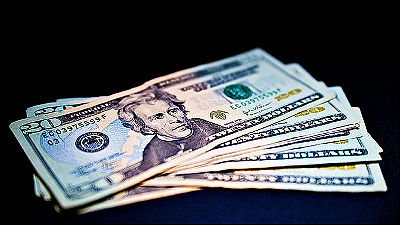Analyzing the relationship between cost, churn rate, growth rate, conversion rate when selling subscription type application from actual records

by
'Developing an app' and 'selling an app' are completely different things, and it is often difficult for individuals who develop apps to make a profit from selling apps. Developer and designer James Long is also on the go with subscription-based app sales, and is currently on the go.・ The actual record of the relationship between the churn rate and the growth rate is disclosed.
Analyzing churn rates, free trials, and other metrics
https://jlongster.com/analyizing-profit-metrics
Long released a subscription-based finance app called Actual in 2019. Although the development of the application itself worked, Mr. Long, who has only a background as a developer, said that he had no knowledge of metrics such as churn rate and free trial, so he could not go quickly.
For Long, setting a free trial on Actual wasn't a problem. However, the Financial app Actual must be synchronized with your bank account to automatically download transactions. Mr. Long used a service called Plaid which provides an API for exchanging data with the existing banking system, but using Plaid, synchronization costs $ 0.25 per account / user per month (about 27 yen) That it takes. This means that if the user syncs with three accounts, Long will have to pay $ 0.75 while the app is free.
Mr. Long, who delayed the implementation of the synchronization function for fear of creating a big loss, actually decides to calculate what is the cost when a 16-month subscription is made? did.
First, for each element required for the calculation, Long thought as follows.
・ Cost of free trial
If you set the maximum number of synchronized accounts to 2 during the free trial period, the cost per user will be $ 0.5 (about 54 yen). However, users tend to make Plaid's payment cycle every two months, so Mr. Long needs to pay for two months even for a 30 day trial.
・ Conversion rate
The conversion rate of a trial user of an app to a subscription is typically higher than the conversion rate of a website visitor. According to Mr Long's research, it is expected to be about 6%.
·price
In the case of Actual, the subscription price of the app including the account synchronization function was set to $ 7 per month (about 760 yen).
·growth rate
Mr. Long does not have data to accurately calculate the growth rate that users are increasing every month. So the growth rate was set to 'about 5%'. He says he wants to achieve higher conversion rates and higher growth rates, but his forecasts are 'pessimistic'.
◆ Minus by cost
Determining cost, income, and profit from these is like this. From the left column are Month, New Free Trial, New Subscriber, Cost, Revenue and Profit.
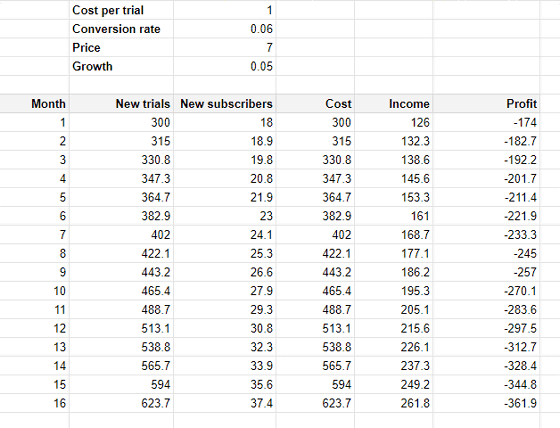
Here is a graph. At first glance, it seems that there is only a loss, but this is because future profits are not considered.

In the first month, I lost $ 174 (about 18,900 yen) to create $ 126 (about 13,700 yen), but this loss will be recovered in 1.38 months if the number of subscription subscribers increases steadily You can do it. Also, in the first month, I lost $ 300 (about 32500 yen) to get 18 subscribers, and it seems that there is a loss of $ 16.67 (about 1800 yen) per subscriber, This can be recovered in 2.38 months. It is a safe bet to think that 'users will use the app for 2.38 months', and looking at this graph, Mr. Long seems to have the impression that 'it is not as bad as expected'.
◆ Profit from subscription
Next, consider the case of a regular subscription. When calculating profits, calculations are based on 'total subscribers' rather than 'new subscribers.'
Adding the elements 'total subscribers', 'income' and 'profit' to the above spreadsheet looks like this. In the third month, the profit turned negative, and after 16 months, it was calculated to be $ 2355 per month (about 255,000 yen).

Here is a graph. The blue graph is cost, the red graph is income, and the orange graph is profit.
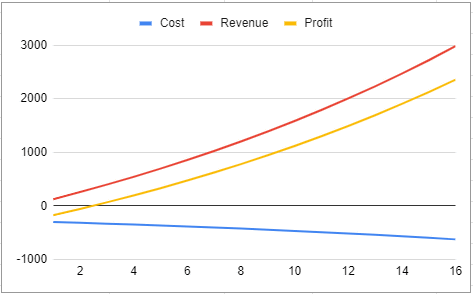
◆ Churn rate
The above data assumes that users will never leave, but churn is another important factor to consider. Long argued that 'sufficient data is not yet available to get accurate figures,' but assumed that the churn rate was 7%, or one out of every 15 new subscribers.
Considering the churn rate, the spreadsheet looks like this ...
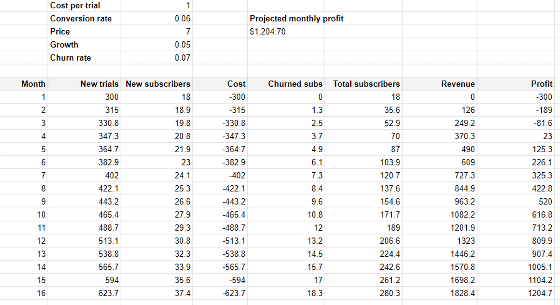
The graph looks like this. Considering the churn rate, the monthly profit after 16 months was $ 1338.4 (about 145,000 yen), about 100,000 yen less than before considering the churn rate.
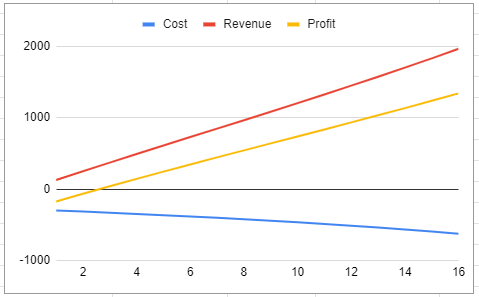
◆ Considering the first month's free portion
The spreadsheet was fine-tuned because the first spreadsheet was a calculation where the subscriber immediately became a subscriber and paid. Similarly, since profits from new subscribers for the month need to be ignored, it is necessary to use 'total subscribers at the end of last month' to calculate profits. So recalculating it looks like this. The monthly profit after 16 months has been revised to $ 1204.70.

◆ Subscriber's monthly fee
In addition, he reconciled here, recognizing the cost of account synchronization for all subscribers, not just new subscribers. Plaid also has a minimum payment price of $ 500 per month (about 54,200 yen), and you need to pay $ 500 even if the usage fee is $ 125 (about 13,600 yen). Long has also adjusted this.

Here's the graph. The monthly income after 16 months was revised to $ 1008.80 (about 110,000 yen).
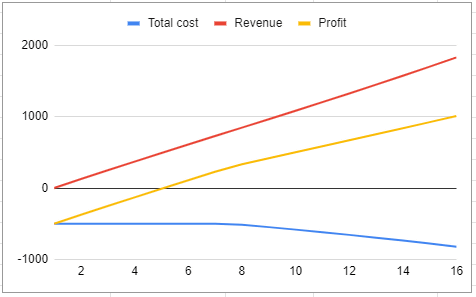
◆ Try to be optimistic
If you increase your conversion rate from 6% to 9% and churn from 7% to 6%, your profits will skyrocket to $ 2395.7.
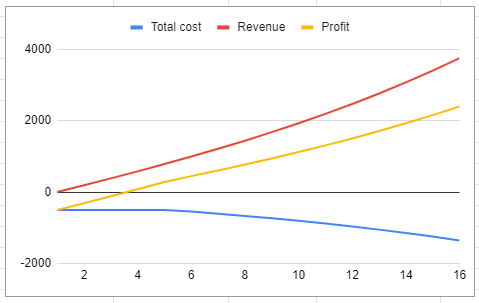
◆ What is needed to reach $ 10,000 per month (about 1.1 million yen)?
It's easy to think that you should increase your growth rate to reach 1.1 million yen per month within 16 months, but in reality, 6% conversion rate, acquisition cost $ 16.6 (about 1800 yen), 7% If you calculate the churn rate at $ 1 per trial, you will lose a fortune when you increase your growth rate to 20%. Mr. Long does not yet mathematically understand this phenomenon, but says, `` Rather than investing a large amount for growth, thinking as a way to lower the cost of trials or raise the price Can be done. '
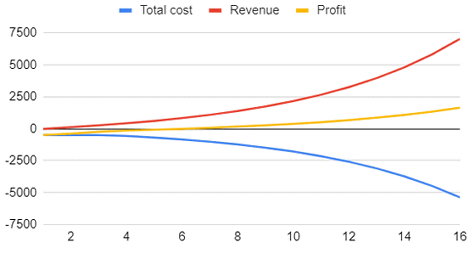
Related Posts:
in Software, Posted by darkhorse_log





